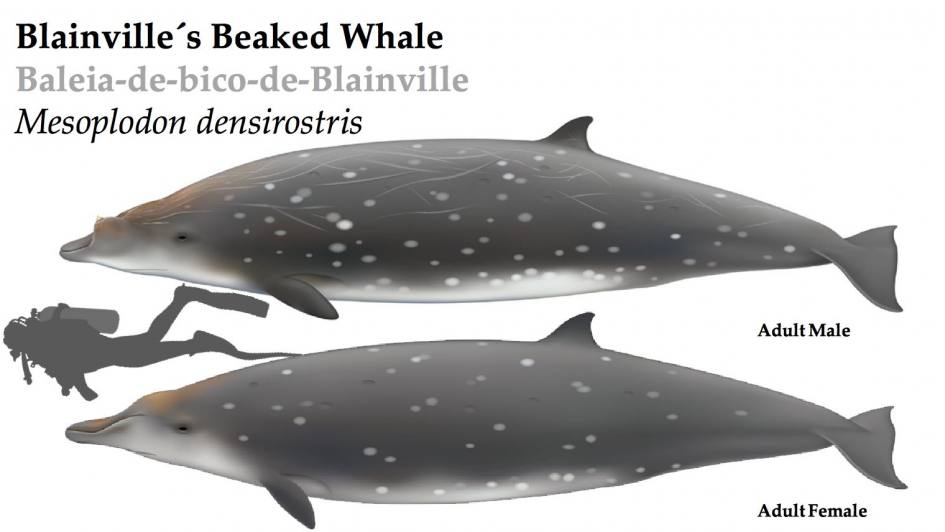
Blainville’s Beaked Whale, Mesoplodon densirostris, is probably the most robust and deep-bodied member of the genus Mesoplodon, which includes 15 of the 24 known species of beaked whales. Mesoplodonts derive their latin name from the presence of a pair of teeth which only erupt in the low jaw of adult males. Teeth shape and position in the jaw varies depending on the species. Moreover, as the latin name densirostris suggests, the rostrum of Blainville’s Beaked Whale have a very dense bone structure.
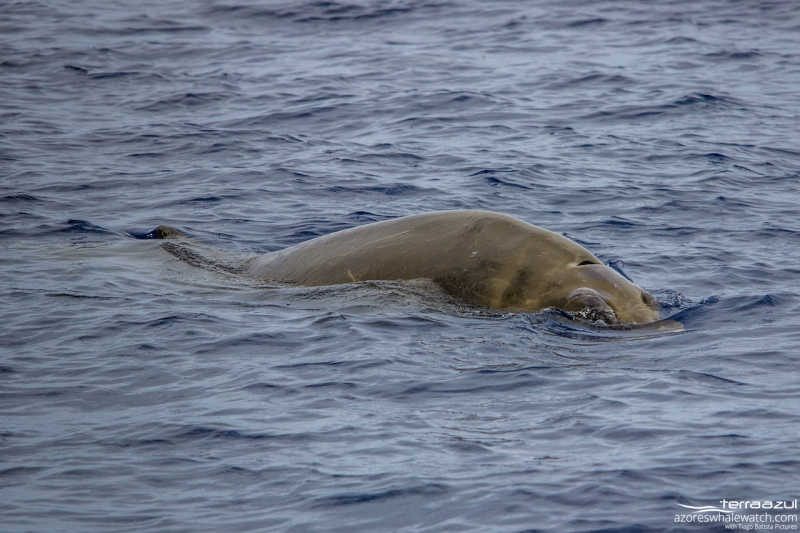
CHARACTERISTICS
- Latin name : Mesoplodon densirostris
- Suborder : Odotonceti
- Family: Ziphiidae
- Length : up to 5.5 meters
- Weight : up to 1 ton
- Dive time : up to 60 minutes
- Dive depth: up to 1900 meters
- IUCN Status: Least concern
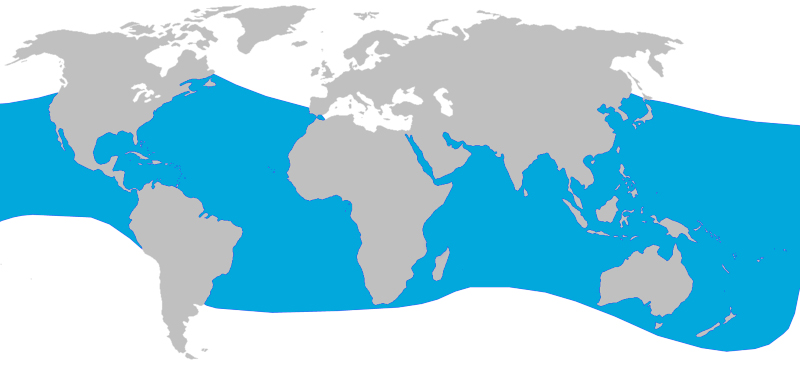
Worldwide distribution of Blainville’s Beaked Whales (Mesoplodon densirostris).
DESCRIPTION
Color: Dark blue-grey to brown on the back, sometimes greenish from diatom algae infestation. Paler coloration reaching white on the ventral part. Skin is often marked by circular scars caused by cookie-cutter sharks bites.
Head: Indistinct melon, the forehead slopes onto the long beak.
Fins: Triangular, small and wide-based dorsal fin.
Teeth: Large pointed tooth on each side of the strongly arched lower jaw (mature male).
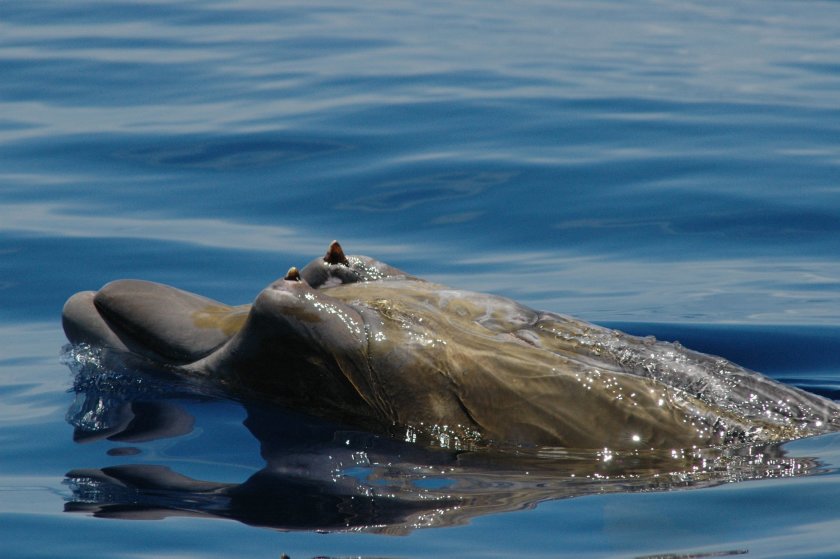
Adult male with tusks clearly visible on the rim of the protruding lower jaw.
LIFE HISTORY
DIET
Blainville’s Beaked Whales mainly feed on squids: up to 47 different species (e.g., armhook squid, glass squid, cock-eye squid) have been found in their stomach content! They also feed occasionally on fish, invertebrates and crustaceans.
REPRODUCTION
Sexual maturity is reached at the age of 9 years old.The gestation lasts about 12 months. Females usually give birth every 2-3 years. At birth, calves measure around 1.9-2.6 meters in length. Very little is known about their reproduction.

A mother-calf pair of Blainville’s Beaked Whales (Mesoplodon densirostris)
SOCIAL BEHAVIOR
Usually solitary, Blainville’s Beaked Whales sometimes form small groups of 3-7, up to 10 individuals. Scars caused by the two teeth are typical, especially on males, probably due to aggressive behavior during competition for mating opportunities.

VOCAL BEHAVIOR
Blainville’s Beaked Whales seem to be most of the time in silence, in particular in proximity of the surface. This cryptic behavior is presumably a strategy to avoid detection by predators such as killer whales or false killer whales. Echolocation (click/buzz and rasps/whistles) is used to locate prey on deep dives. Here you can listen to Blainville’s Beaked Whale clicks and buzz recorded by the University of La Laguna, Canary Islands, Spain. The buzz seems to be produced when the whale is closing in to its prey just before to capture it.












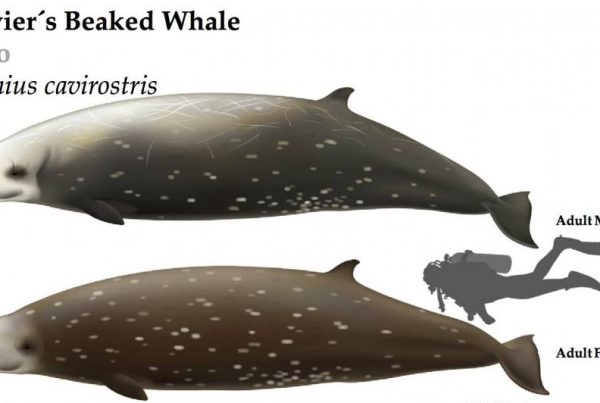
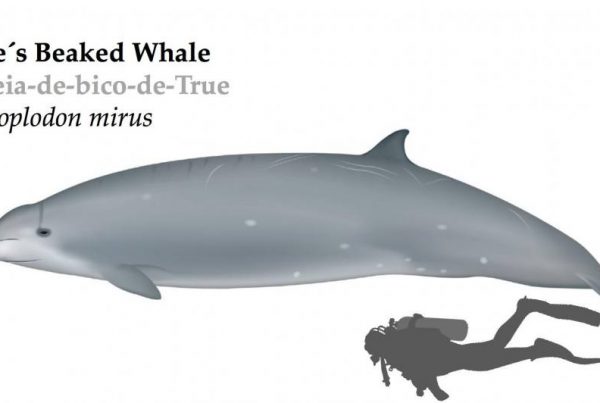
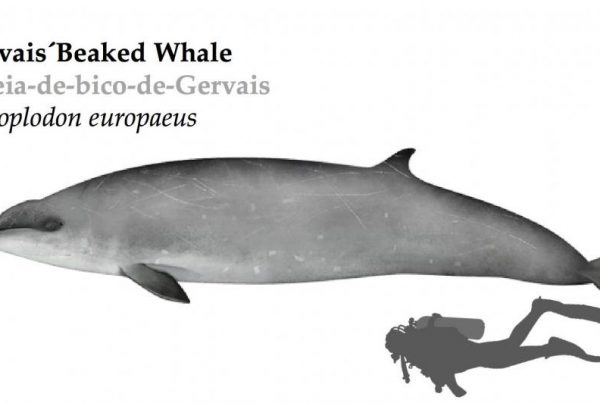



Your thoughts on this?